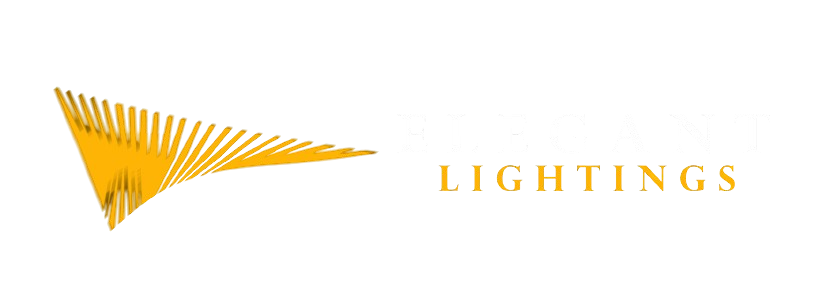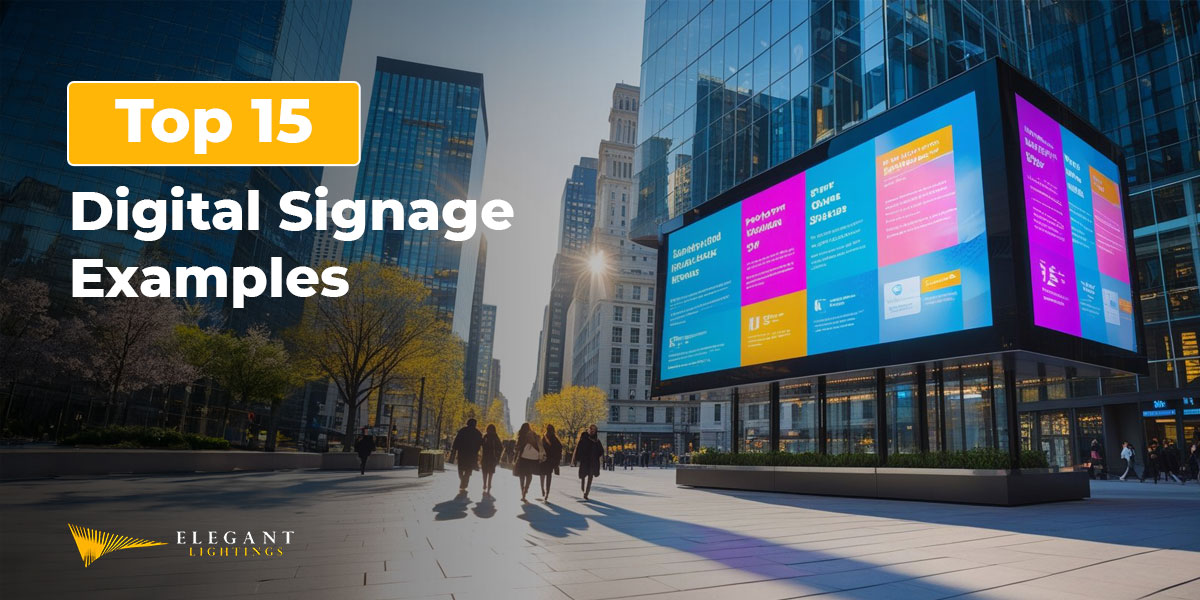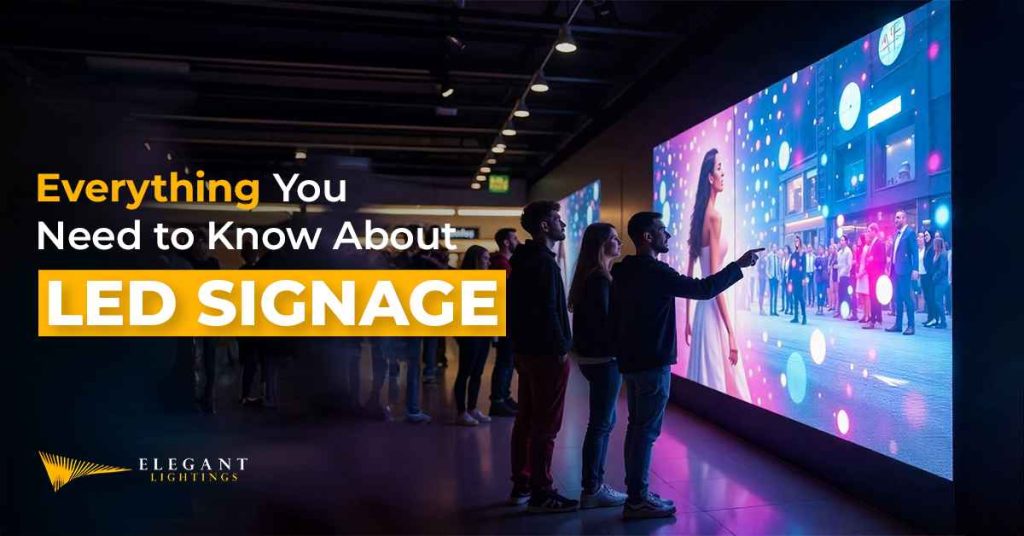
The business world is gradually becoming a competitive place. Startups are absolutely nailing it when it comes to clever copy and eye-catching ads. The bar has been raised.
What's on this page:
That means businesses today face a real challenge: grabbing people’s attention in an increasingly crowded market.
Sure, traditional static signboards have been the go-to for years. But times are changing. They’re now being replaced with something far more powerful, called LED signage.
It’s modern, energy-efficient, and provides a dynamic way to showcase your brand message in a way that actually gets noticed.
That’s why your business needs LED signage!
Why? It’s because audience attention spans are becoming shorter and competition is everywhere. So, whether it’s a digital menu board or a full-scale outdoor LED wall, the right signage can elevate brand recall and bring business results.
In this blog, you’ll discover how LED signage works, its core benefits, types, cost insights, and how to choose the right one for your needs!
Everything You Need to Know About LED Signage: Table of Contents
- What Is An LED Signage?
- What Are The Types Of LED Signage For Your Business?
- How Are LED Sign Boards Being Used In Different Industries?
- What Are The Benefits Of Using LED Signage For Business?
- What Should You Consider When Choosing An LED Signage?
- Get Your Custom LED Signage From Elegant Lightings
- Everything You Need to Know About LED Signage: FAQs
What Is An LED Signage?
An LED signage is a kind of digital billboard. Its screen consists of LEDs that work together in little clusters called pixels. When these LEDs are lit up, the screen displays crisp and colorful visuals, such as animations, videos, or images.
The ultra-clear visual you see, even when you are close to the LED signage, is achieved through a pixel pitch of 1.2 mm, which is tightly set.
Normally, they have a brightness level of up to 10,000 nits, making these LED signboards visible even in direct sunlight or in any outdoor location.
At Elegant Lightings, we ensure that all our outdoor LED signage is IP65-rated and designed to withstand tough weather conditions with ease.
What Are The Types Of LED Signage For Your Business?
Digital LED signage comes in four options. Let’s briefly explore each of them so you can decide which one is right for your business:
1. Indoor LED Signs
As the name suggests, LED signs are designed specifically for indoor use and close viewing.
Key Features Of Indoor LED Signs
- Indoor LED Signs generally have a high pixel density as low as 1.2mm
- Typically operate at lower brightness levels, around 1,200 nits. This helps prevent any harsh glare or eye strain, making them perfect for indoor environments
- They are suitable for controlled environments such as retail stores, malls, corporate lobbies, and event halls
- Some latest indoor signs support 4K resolution and bezel-free visuals.
2. Outdoor LED Signs
Outdoor LED signage is designed differently: it is engineered specifically for outdoor use.
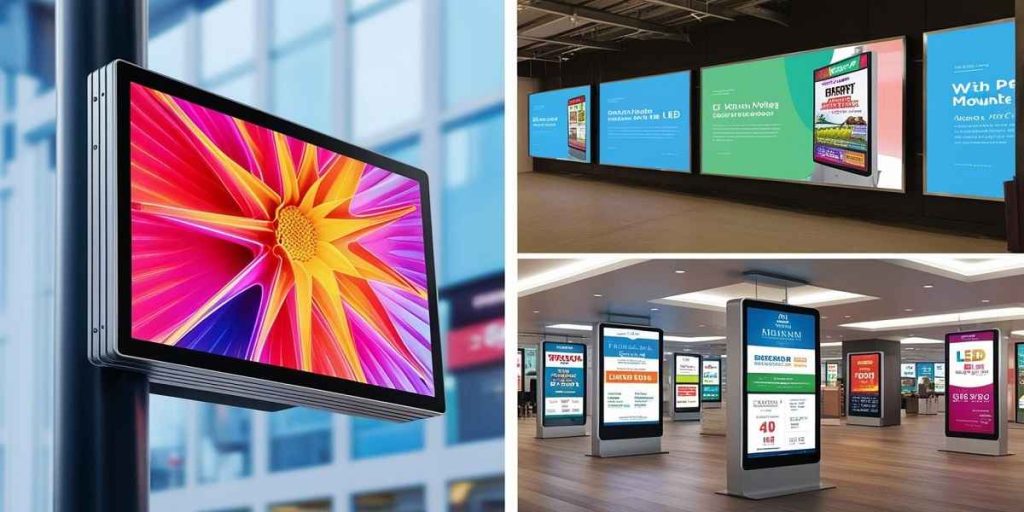
Key Features Of Outdoor LED Signs
- These systems feature a higher brightness setting, up to 10,000 nits, enabling the content to remain readable even in harsh sunlight
- Most of the latest outdoor LED signage gets an IP65+ waterproof and dustproof rating
- Outdoor LED signages come with reinforced metal housings and anti-UV coatings for weather resistance and durability
- Uses pixel pitch range between P4 to P10, which are ideal for long-distance viewing
- Outdoor LED signs are commonly used at storefronts, roadside billboards, stadiums, and event spaces
- Designed to withstand harsh weather conditions, including rain, strong winds, and extreme temperatures
3. Curved LED Signs
Curved LED displays are primarily focused on the creative and visually appealing presentation of content, featuring a curved display unit.
Key Features Of Curved LED Signs
- It is built with flexible PCBs and soft module cabinets
- These signs can bend around columns and form semi-circular walls, without pixel distortion
- They are used in industries like luxury retail, auto showrooms, and immersive exhibition spaces
- They’re also modular, so you can expand or reshape them as needed.
4. Transparent LED Signs
Transparent LED signs epitomize innovation. With these signages, you won’t have to worry about obstructing the view behind the screen.
Key Features Of Transparent LED Signs
- They are built using high-transparency glass substrates and micro-LED nodes
- Let’s up to 85% of natural light pass through, while displaying high-resolution content to your viewers
- It is commonly used in retail shopfronts, airports, and luxury showrooms
- The pixel pitches start at 3.9mm, and the brightness exceeds 5,500 nits.
How Are LED Sign Boards Being Used In Different Industries?
The offerings of LED signs have attracted businesses across multiple industries. Let’s check out the industries that are using LED signs to introduce products, attract customers, and communicate with their prospects:
1. Transportation – at airports, train stations, and subways.
You commonly see LED displays at airports, metro stations, and train terminals. They are used as LED signboards at the counters, platforms, departures, arrivals, and flight status screens. Plus, you’ll see brands display their advertisements at these places.
These are fast-paced environments where clarity and reliability are a must. The high brightness level and weather resistance of these systems make them appropriate for such places.
2. Educational environments
Modern educational campuses are using LED signs to showcase class schedules, event updates, and important notices.
Interactive LED boards with touch-enabled tech and 4K resolution now serve as digital noticeboards, replacing outdated static boards. They also support campus-wide CMS integration for instant content updates.
3. Hospitality
Hotels, cafes and resorts are using digital LED signage to display welcome messages, conference room schedules, and digital concierge boards.
These are the places where you’ll find curved or transparent displays in upscale lobbies, blending seamlessly into modern interior design while promoting services dynamically.
4. Advertisements
This is the core utility of digital LED signage. They deliver high-impact advertisements 24/7.
Any modern business uses LED signs to synchronize their content with the LED displays in real-time.
If you run an advertising agency, LED signage is a must-have to display vibrant and vivid ads for your clients. You can allocate hourly ad space for each company and update the content as needed.
For example, a digital billboard might switch from promoting iced beverages in the afternoon to hot coffee in the evening
What Are The Benefits Of Using LED Signage For Business?
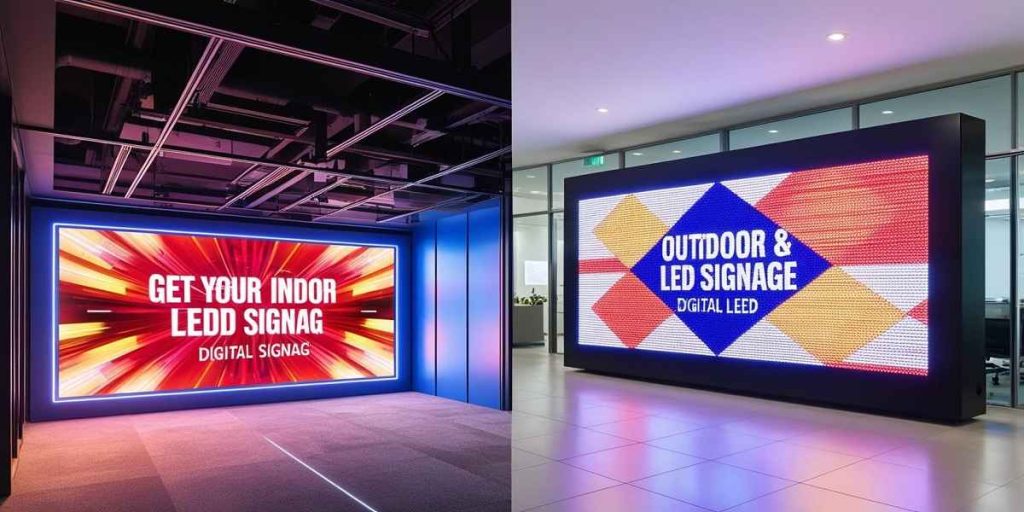
All these industries are increasingly utilizing LED signage. Why? Because they are getting immense benefits from it. If your business falls under any of these industries and plans to install an LED sign, then here are the benefits you can expect.
- Enhanced visibility: Your content stays sharp and readable due to the high brightness of these LED signs. And it’s regardless of any conditions where visibility can be an issue.
- Energy-Efficient and Eco-Friendly: LED displays consume 80% less power than traditional signs. This results in lower electricity bills and electronic waste.
- Easy Content Revisions: Do you want to change promotional content after certain hours and display a new one? With LED signs, you can do it easily through a simple software dashboard.
- High ROI on Advertising: According to some studies, digital signage attracts 400% more views than static signs. This significant finding highlights the potential of digital signage to engage clients and boost sales.
- Modern Brand Image: An LED signage instantly gives your brand a unique edge. When your audience encounters your vibrant signage, it’ll help you communicate bold ideas in an equally bright form! This level of first impression can make your business stand out in the crowded industry.
What Should You Consider When Choosing An LED Signage?
After considering the benefits of digital signage, if you’re thinking of getting an LED sign, these simple steps will help you choose the right one.
- Location: Evaluate whether you need it for indoor or outdoor usage. Outdoor signs need weatherproofing and high brightness, whereas indoor signs require fine resolution.
- Size and Shape: Choose based on the available space and the viewing distance, as necessary setup and alteration in pixel pitch may be required.
- Flexibility: Opt for modular, remote-controlled signs with a cloud-based content management system (CMS) for seamless content updates.
- Budget: Advertising, marketing, and signage are the three facets of business promotion that a well-made, high-quality sign can be utilized for, making the cost well worth it. Cover your investment by allocating funds for those three areas.
Get Your Custom LED Signage From Elegant Lightings
Your first impression is your last one! This is especially true in the fast-paced environments of transportation, hospitality, advertising, and education.
High-quality LED signage captures attention, reduces energy bills, and enables real-time content control.
However, your signage should be as unique as your brand, which helps boost foot traffic and build brand recall.
So, you’ll need custom LED signage built to fit your space, your audience, and your brand, and that’s exactly what we do at Elegant Lightings.
We design and manufacture LED signage and walls that work smarter and are uniquely built just for you.
Reach out to us for a complimentary consultation, and get the right LED signage that makes your business impossible to overlook.
Everything You Need to Know About LED Signage: FAQs
1. What are the basics of an LED screen?
Each of these LED screens are made of thousands of LEDs arranged in clusters or pixels. They are connected to create a larger screen. Each LED represents a single pixel.
2. What are the benefits of having LED signage?
There are several benefits of having an LED signage for business, such as:
- Enhances visibility
- Energy Efficient and Eco-Friendly
- Easy Content Revisions
- High ROI on Advertising
- Dynamic and Targeted Messaging
3. How many watts does an LED sign use?
It completely depends on the size, brightness, and whether the sign is single- or double-sided. For example:
- A standard 4ft x 8ft outdoor LED sign might consume around 300–700 watts per hour.
- Indoor LED signs typically consume significantly less energy, typically ranging from 60 to 200 watts per hour.



